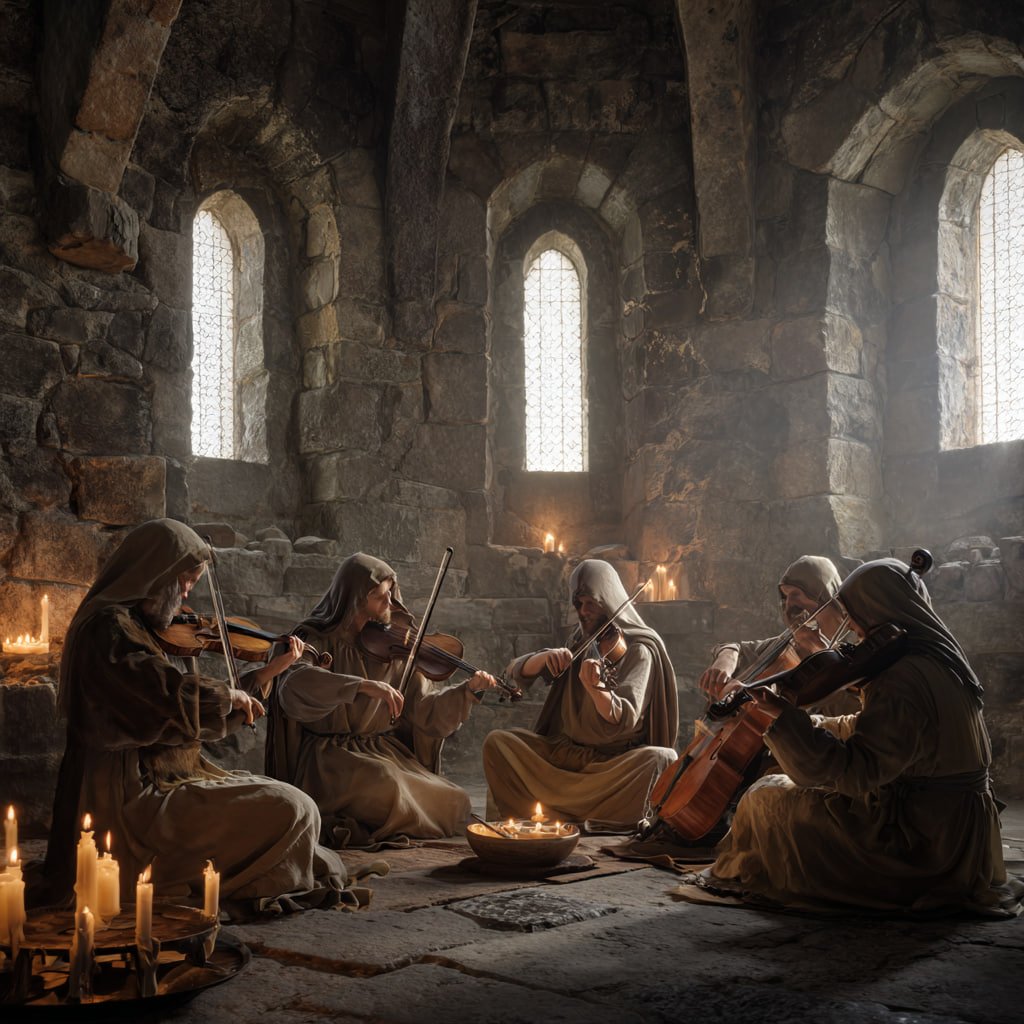A Journey to the First Famous Musicians in History
Before there were music charts, concert halls, or platinum records—before even the idea of a “career in music” existed—there were sounds. Human voices humming lullabies in ancient caves. Hollow bones transformed into flutes. Drums echoing across hillsides long before cities rose. Music has always been with us, older than writing, older than history itself.
But who, we might wonder, were the first musicians who became known—truly known—in their own time? Not just for creating music, but for shaping it, for becoming the first stars in a world that was just beginning to define art, fame, and the extraordinary.

We begin, perhaps surprisingly, not with a man, but with a woman. Her name was Enheduanna, a Sumerian priestess who lived over 4,000 years ago in what is now Iraq. Though known mainly as a poet and high priestess, her hymns were sung in temples by choirs, passed from voice to voice like sacred songs. In a sense, Enheduanna was the first composer whose name we remember—a musical storyteller whose lyrics were so powerful they outlived her kingdom. Centuries later, in Ancient Greece, music was already considered a divine gift. It was Pythagoras—not just a mathematician but a mystic—who discovered the mathematical relationship between notes and harmony. But it was Terpander of Lesbos, a name long forgotten by most, who truly earned his fame as one of the earliest professional musicians. Terpander was known for refining the seven-stringed lyre and composing songs that united poetry, rhythm, and melody into something Greeks called “mousike”—the art of the Muses.
His songs were not just entertainment; they were performed in public competitions, shared during festivals, carried across city-states like oral symphonies. Terpander didn’t just play music. He was known for changing it—for making it something you could teach, learn, remember. And in doing so, he became one of the earliest musicians whose fame crossed beyond family or village As Europe entered the medieval age, the light of music burned on in monasteries and courts. Boethius, a Roman philosopher and musician, helped lay the foundation of Western music theory. But when it comes to fame among the people, we must look to Hildegard of Bingen, the 12th-century abbess who composed soaring melodies that were said to come from visions of heaven itself. She was a mystic, a healer, and a musical innovator. Her chants were unlike anything heard before—expressive, daring, full of intervals that dared to leap where others would step. And yet, her music survived. Not by accident, but because it moved people deeply. Because even in a cloistered world, Hildegard’s voice reached through time.
With the Renaissance came the printing press, and with it, the first true music “publishing.” Suddenly, the names of composers could travel with their music. Josquin des Prez, beloved by kings and church alike, became a household name in Europe. His music wasn’t just admired; it was copied, quoted, and sung everywhere. He was among the first musicians to achieve continental fame—not just through live performance, but through the printed page. And from that point on, the rise of famous musicians accelerated. Palestrina, Monteverdi, Bach, Mozart—names we now teach in every music school. But each of them, in some way, followed in the path laid by those earliest artists: the ones who composed not just for courts or gods, but for human voices, for community, for memory
What unites all of these figures—across centuries, borders, and languages—is that they made music not for themselves, but to connect. To help people feel what they couldn’t say. To bind stories to sound. To bring structure to something as wild and invisible as emotion.
And that, truly, is what we still ask of music today. Not just to impress us, but to move us. To leave a mark not just on ears, but on the heart.
So when a child takes their first music lesson—when they sing their first scale, touch the piano keys for the first time, bow their violin with unsure fingers—they are stepping into a river that began flowing long before lights, or concerts, or names carved in marble. They are joining the same journey once walked by Enheduanna, Terpander, and Hildegard.
And who knows? With time, study, and passion, perhaps their name, too, will be remembered